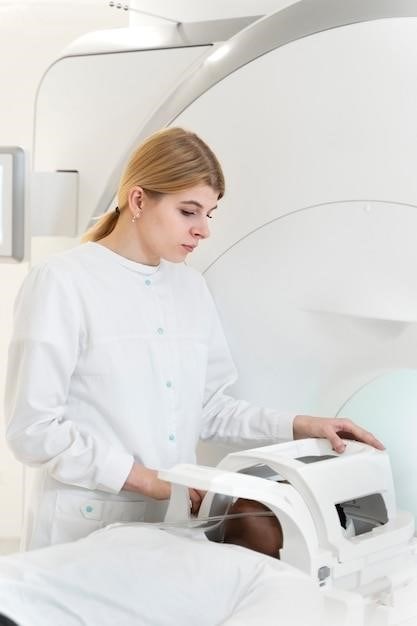patient care tech study guide
A Patient Care Technician (PCT) assists nurses with daily tasks in healthcare settings. They ensure patient comfort‚ support the team‚ and aid in efficient care.
1.1 Overview of Patient Care Technicians
Patient Care Technicians (PCTs) are essential healthcare professionals who assist nurses and other medical staff with patient care. They perform vital tasks such as monitoring patients‚ documenting health information‚ and preparing medical equipment. PCTs work in hospitals‚ clinics‚ and long-term care facilities‚ providing hands-on support to ensure patients receive quality care. Their role is crucial for maintaining efficient healthcare operations and improving patient outcomes. By focusing on both clinical and interpersonal skills‚ PCTs contribute to a holistic approach in patient care.
1.2 Importance of PCTs in Healthcare
Patient Care Technicians (PCTs) play a vital role in healthcare by bridging the gap between patients and advanced medical care. They assist with daily tasks‚ monitor patient conditions‚ and document health data‚ ensuring seamless care delivery. PCTs enable nurses and doctors to focus on complex treatments by handling routine duties. Their role is essential for patient safety‚ efficiency‚ and satisfaction‚ making them indispensable in modern healthcare settings. By supporting both clinical and interpersonal aspects of care‚ PCTs significantly enhance overall healthcare outcomes and patient well-being.
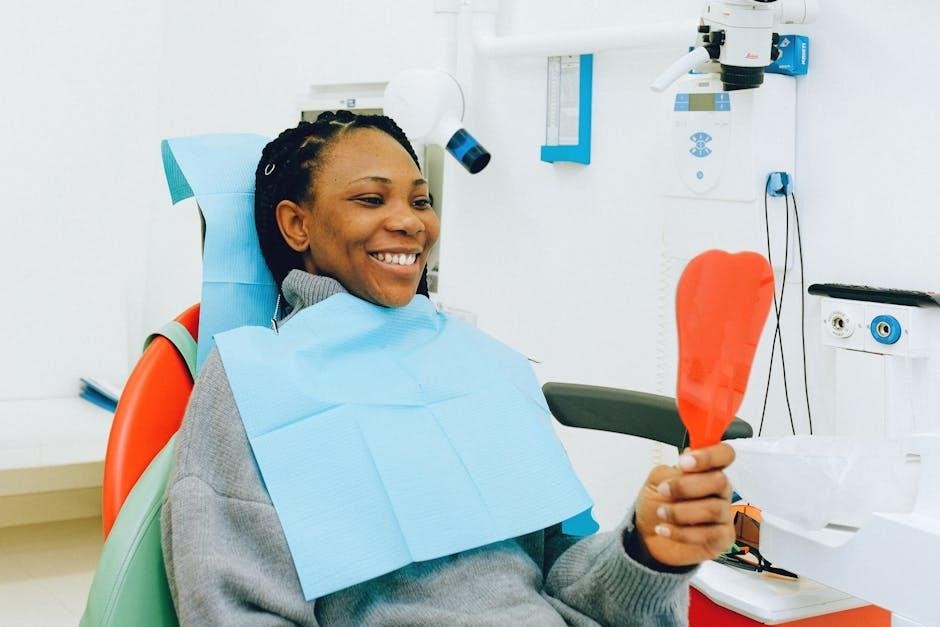
Key Responsibilities of a Patient Care Technician
Patient Care Technicians (PCTs) monitor patients’ conditions‚ assist with daily tasks‚ and support healthcare teams. They ensure patient safety‚ comfort‚ and proper documentation of care.
2.1 Daily Tasks and Duties
Patient Care Technicians (PCTs) perform various daily tasks to support patient care. These include monitoring vital signs‚ assisting with mobility‚ preparing patients for exams‚ and documenting care. They also help with hygiene‚ nutrition‚ and emotional support. PCTs work under nurses to ensure smooth operations and patient comfort. Their duties are essential for maintaining high-quality care and patient satisfaction in healthcare settings.
- Assisting with vital sign measurement and reporting changes.
- Supporting patients with daily living activities.
- Maintaining accurate records and updating EHR systems.
- Preparing patients for medical procedures and exams.
2.2 Patient Interaction and Communication
Patient Care Technicians (PCTs) interact closely with patients‚ ensuring effective communication to meet their needs. Active listening‚ empathy‚ and clear explanations are key. PCTs also collaborate with healthcare teams to provide personalized care. Building trust through respectful and professional interactions is crucial. They must adapt communication styles to accommodate diverse patient backgrounds and needs‚ fostering a supportive environment. Effective communication enhances patient satisfaction and outcomes‚ making it a cornerstone of the PCT role.
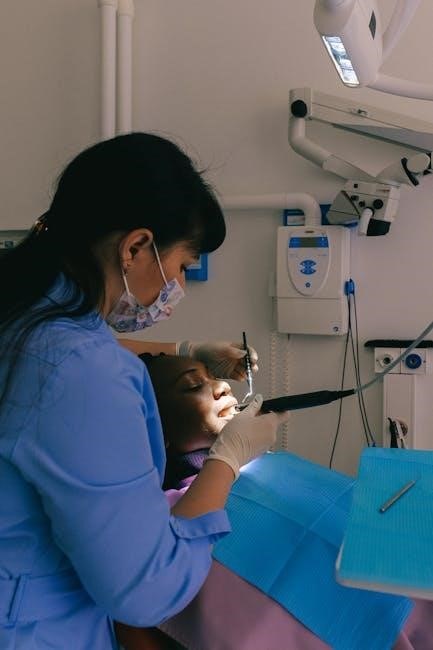
Essential Skills for Patient Care Technicians
Essential skills include communication‚ empathy‚ clinical expertise‚ and problem-solving abilities to provide effective and compassionate care.
3.1 Communication Skills
Effective communication is vital for PCTs to connect with patients and healthcare teams. Active listening‚ empathy‚ and clarity ensure clear exchanges. Cultural competence and adaptability in communication styles enhance patient trust and understanding. PCTs must articulate patient needs accurately to nurses and doctors‚ fostering collaboration. They also use electronic health records (EHRs) and other tools for precise documentation and information sharing. Strong communication skills are essential for providing compassionate‚ patient-centered care and ensuring seamless teamwork in dynamic healthcare environments.
3.2 Clinical Skills
PCTs require strong clinical skills to perform essential medical tasks. These include taking vital signs‚ assisting with mobility‚ and preparing medical equipment. Proficiency in infection control‚ wound care‚ and basic life support is critical. They must accurately document patient data in electronic health records (EHRs) and understand proper hygiene practices. Clinical skills also involve using medical devices and understanding emergency procedures. Continuous training ensures PCTs stay updated on best practices‚ enabling them to provide high-quality‚ safe patient care in diverse healthcare settings.
3.3 Problem-Solving Abilities
PCTs must possess strong problem-solving skills to address unexpected challenges in patient care. Critical thinking and adaptability are essential when handling emergencies or unexpected patient conditions. They must assess situations quickly‚ prioritize actions‚ and make informed decisions. Effective problem-solving ensures patient safety and efficient care delivery. PCTs also need to remain resourceful‚ using available tools and knowledge to resolve issues. Continuous training and experience enhance these abilities‚ enabling PCTs to manage diverse challenges effectively in dynamic healthcare environments.
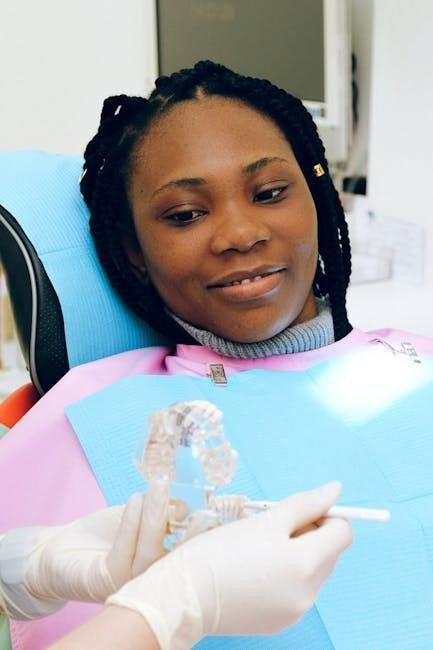
Certification and Training for PCTs
PCT certification involves completing approved training programs and passing exams. These programs cover clinical skills‚ patient care techniques‚ and legal requirements‚ ensuring quality care and career advancement.
4.1 Obtaining Certification
Obtaining certification as a Patient Care Technician involves completing a state-approved training program and passing a certification exam. Many programs are offered through vocational schools or community colleges. These programs typically cover essential skills like taking vital signs‚ patient monitoring‚ and basic care procedures. After completing the program‚ candidates must pass a certification exam administered by a recognized body‚ such as the National Healthcare Association (NHA) or the National Certified Patient Care Technician (NCPT) program. Certification demonstrates competency and commitment to patient care‚ enhancing career opportunities and credibility in the healthcare field. Certifications must be renewed periodically to stay current with industry standards and advancements.
4.2 Training Programs and Requirements
Training programs for Patient Care Technicians typically last several months and cover both classroom and clinical instruction. Students learn basic patient care skills‚ such as taking vital signs‚ assisting with daily activities‚ and using medical equipment. Most programs require a high school diploma or equivalent and may include background checks. Many programs are offered through vocational schools‚ community colleges‚ or hospitals. Upon completion‚ graduates are prepared to take certification exams. These programs emphasize hands-on training to ensure practical experience. Coursework often includes patient communication‚ legal aspects of healthcare‚ and infection control. Successful completion of a state-approved program is essential for eligibility to take the certification exam‚ ensuring competence in patient care techniques and safety protocols.
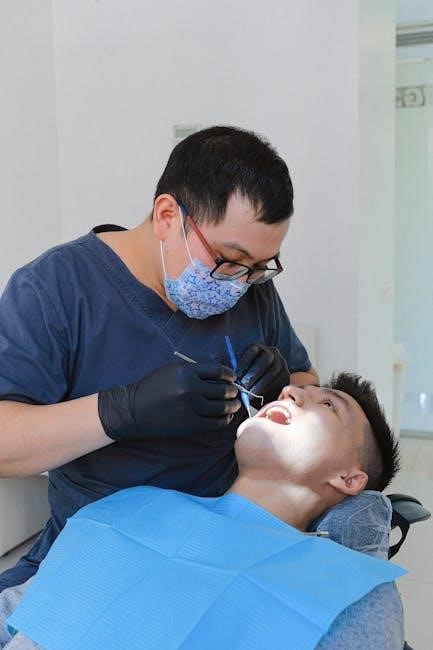
Patient Care Techniques
Patient Care Techniques involve essential skills like monitoring vital signs‚ assisting with mobility‚ and providing personal care. These methods ensure safe‚ effective‚ and compassionate patient support.
5.1 Basic Clinical Procedures
Basic clinical procedures include measuring vital signs‚ preparing patients for exams‚ and assisting with activities of daily living. PCTs also perform phlebotomy‚ EKGs‚ and wound care under supervision. Proper hygiene‚ sterilization‚ and documentation are critical. These procedures ensure patient safety‚ comfort‚ and effective care delivery. Proficiency in these tasks is essential for supporting healthcare teams and maintaining high-quality patient outcomes. Continuous training and adherence to protocols are vital for mastering these fundamental skills.
5.2 Patient Monitoring and Documentation
Patient monitoring involves observing and recording vital signs‚ such as heart rate‚ blood pressure‚ and oxygen levels. Accurate documentation ensures continuity of care. PCTs use electronic health records (EHRs) to update patient information‚ noting changes in condition or concerns. Timely and precise documentation helps healthcare teams make informed decisions. Proper recording of observations and interventions is critical for patient safety and legal compliance. Effective monitoring and documentation skills are essential for PCTs to provide high-quality‚ patient-centered care.
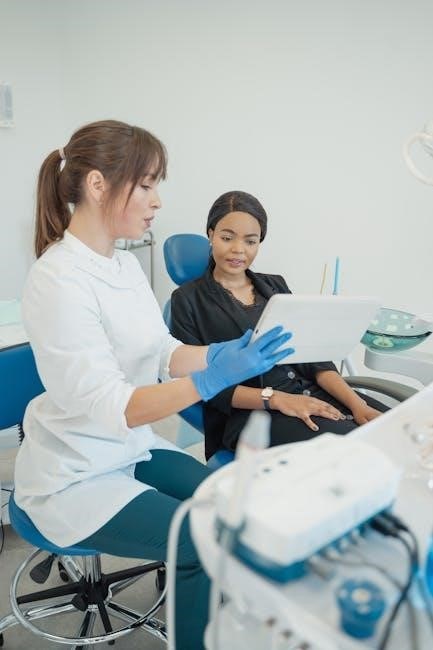
Legal and Ethical Considerations
Patient care technicians must adhere to legal and ethical standards‚ ensuring patient rights‚ confidentiality‚ and safety. Ethical dilemmas require thoughtful decision-making to uphold patient trust and dignity.
6.1 Patient Rights and Confidentiality
Patient care technicians must respect patient rights‚ ensuring confidentiality and privacy. This includes adhering to HIPAA guidelines‚ safeguarding medical records‚ and obtaining consent before sharing information. Upholding these principles builds trust and maintains ethical standards in healthcare settings‚ ensuring patients feel secure and respected throughout their care journey. Technicians play a crucial role in protecting sensitive data and promoting a culture of confidentiality.
6.2 Ethical Dilemmas in Patient Care
Ethical dilemmas in patient care often arise when technicians must balance patient autonomy with safety. For example‚ a patient may refuse treatment despite risks‚ or cultural beliefs may clash with medical advice. Technicians must navigate these situations with empathy and professionalism‚ ensuring decisions align with ethical standards. They should seek guidance from supervisors when faced with complex moral choices‚ fostering a patient-centered approach that respects individual values while upholding healthcare principles.
Healthcare Technology for PCTs
Healthcare technology‚ including EHRs‚ medical devices‚ and telehealth tools‚ is essential for PCTs to manage patient data‚ monitor health‚ and deliver efficient care in modern settings.
7.1 Electronic Health Records (EHRs)
Electronic Health Records (EHRs) are digital versions of patient health records‚ enabling real-time access to medical history‚ diagnoses‚ and treatments. PCTs use EHRs to document vital signs‚ medications‚ and patient progress‚ improving care coordination and reducing errors. EHR systems‚ such as Epic or Cerner‚ streamline communication between healthcare providers and enhance patient safety. Accurate documentation in EHRs is critical for PCTs to support informed decision-making and ensure continuity of care. Proficiency in EHRs is a key skill for modern patient care technicians.
7;2 Medical Devices and Equipment
Patient Care Technicians (PCTs) work with various medical devices and equipment to monitor and support patient care. Common tools include blood pressure monitors‚ pulse oximeters‚ and glucose meters for vital sign tracking. PCTs also use mobility aids like wheelchairs and canes to assist patients. Understanding the operation and maintenance of these devices is essential for accurate readings and patient safety. Proper use of equipment ensures effective care delivery and supports healthcare teams in providing high-quality patient outcomes. Training on medical devices is a key part of a PCT’s role.
7.3 Telehealth and Remote Monitoring
Telehealth and remote monitoring are increasingly important in modern healthcare‚ enabling patient care technicians (PCTs) to support continuous patient care outside traditional settings. Remote monitoring involves tracking patients’ vital signs and health data using wearable devices or mobile apps. PCTs assist in setting up and managing these tools‚ ensuring accurate data collection. Telehealth platforms also allow virtual consultations‚ improving accessibility for patients with limited mobility. PCTs play a key role in preparing patients for telehealth visits and troubleshooting technical issues‚ enhancing overall care delivery and patient outcomes through technology.

Patient Assessment and Care Planning
Patient assessment involves evaluating a patient’s condition to identify needs. Care planning creates personalized strategies to address these needs‚ ensuring tailored and effective patient care delivery.
8.1 Conducting Patient Assessments
Conducting patient assessments involves evaluating a patient’s physical‚ emotional‚ and medical condition. PCTs gather vital information through observations‚ measurements‚ and patient interviews. This includes monitoring vital signs like blood pressure and heart rate‚ assessing mobility‚ and noting any changes in behavior or symptoms. Accurate documentation is crucial for developing effective care plans. PCTs use tools like electronic health records (EHRs) to record findings‚ ensuring continuity of care. Regular assessments help identify patient needs and track progress‚ enabling healthcare teams to adjust treatments accordingly. This step is vital for providing personalized and effective patient care.
8.2 Developing Individualized Care Plans
Developing individualized care plans involves creating tailored strategies to address each patient’s unique needs. PCTs collaborate with healthcare teams to set specific‚ measurable goals. The plan outlines interventions‚ treatments‚ and expected outcomes‚ ensuring personalized care. Regular monitoring and documentation are essential to track progress and make adjustments. This process promotes patient-centered care‚ improving health outcomes and enhancing quality of life. Effective care plans are adaptable‚ reflecting changes in a patient’s condition or needs over time.
Infection Control and Safety
Infection control and safety are critical to preventing the spread of pathogens. PCTs must adhere to strict hand hygiene‚ use PPE‚ and sterilize equipment properly.
9.1 Proper Hygiene and Sterilization
Proper hygiene and sterilization are essential for infection control. Handwashing is a critical step‚ and PCTs must use personal protective equipment (PPE) like gloves and masks. Sterilization involves methods such as autoclaving or chemical disinfection to eliminate pathogens. Cleaning and disinfecting surfaces and equipment are also vital. PCTs must differentiate between cleaning‚ disinfecting‚ and sterilizing to ensure proper infection control. Adhering to these protocols reduces the risk of healthcare-associated infections (HAIs) and maintains a safe environment for patients.
9.2 Safety Protocols in Healthcare Settings
Safety protocols in healthcare ensure a secure environment for patients and staff. These include emergency preparedness‚ proper handling of hazardous materials‚ and safe use of medical equipment. PCTs must adhere to fire safety‚ evacuation plans‚ and incident reporting. Compliance with OSHA standards is mandatory to prevent workplace injuries. Regular drills and training sessions are conducted to maintain readiness. These protocols minimize risks and ensure a safe‚ efficient care delivery system while protecting both patients and healthcare workers from potential harm.
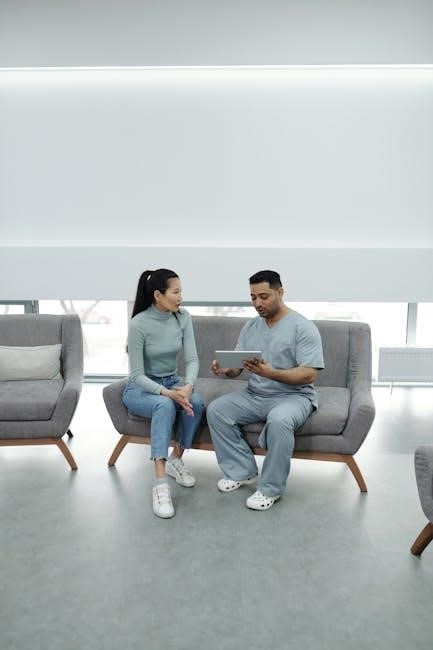
Communication Strategies
Effective communication is crucial in patient care. Clear language‚ active listening‚ and empathy ensure understanding. Collaborating with healthcare teams enhances care coordination and patient outcomes significantly.
10.1 Effective Communication with Patients
Effective communication with patients is vital for building trust and ensuring proper care. PCTs should use clear‚ simple language‚ active listening‚ and empathy to understand patient needs. Maintaining eye contact and a calm demeanor helps patients feel comfortable. Being culturally sensitive and aware of non-verbal cues enhances communication. Regularly updating patients about their care and involving them in decisions fosters a collaborative environment. Clear communication reduces misunderstandings‚ improves patient satisfaction‚ and leads to better health outcomes‚ making it a cornerstone of quality patient care.
10.2 Collaborating with Healthcare Teams
Collaborating with healthcare teams is essential for providing comprehensive patient care. PCTs must work closely with nurses‚ doctors‚ and specialists‚ ensuring clear communication and coordination of tasks. Active participation in team meetings and sharing patient observations can enhance care quality. Respectful and professional interactions foster a positive work environment. Effective teamwork reduces errors‚ improves patient safety‚ and ensures seamless delivery of care. By contributing to a collaborative culture‚ PCTs play a vital role in achieving optimal patient outcomes and maintaining workflow efficiency in healthcare settings.
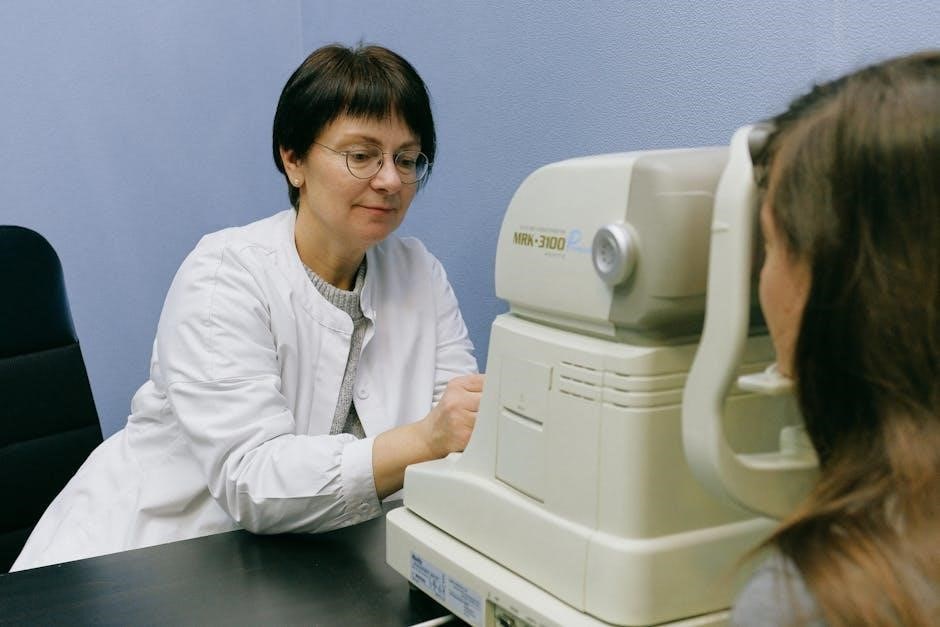
Cultural Competence in Patient Care
Cultural competence in patient care involves understanding and respecting diverse backgrounds‚ beliefs‚ and values. It ensures personalized care‚ fosters trust‚ and improves health outcomes for all patients.
11.1 Understanding Patient Diversity
Understanding patient diversity involves recognizing and respecting the unique cultural‚ racial‚ ethnic‚ and social backgrounds of individuals. This includes acknowledging differences in beliefs‚ practices‚ and values. PCTs must be aware of how these factors influence patient behaviors‚ preferences‚ and healthcare expectations. By embracing diversity‚ technicians can provide personalized care that addresses the specific needs of each patient. This approach fosters trust‚ improves communication‚ and enhances overall care quality‚ ensuring inclusive and equitable treatment for all individuals.
11.2 Addressing Cultural Differences
Addressing cultural differences requires PCTs to adapt care practices to meet patients’ unique needs. This involves cultural competence training‚ using interpretation services‚ and respecting traditions. Technicians should assess patients’ preferences‚ such as dietary restrictions or communication styles. Being sensitive to non-verbal cues and avoiding stereotypes ensures respectful care. By tailoring interactions‚ PCTs can build trust and improve health outcomes‚ fostering a culturally sensitive environment that values diversity and promotes patient satisfaction. Effective communication and adaptability are key to addressing cultural differences successfully.
Quality Improvement in Patient Care
Quality improvement in patient care involves identifying areas for enhancement and implementing measures to ensure high standards of care and patient satisfaction.
12.1 Identifying Areas for Improvement
Identifying areas for improvement in patient care involves analyzing data‚ patient feedback‚ and clinical outcomes. PCTs monitor processes‚ detect inefficiencies‚ and recommend changes to elevate care quality‚ ensuring patient safety and satisfaction. Regular assessments and performance reviews help pinpoint gaps‚ while continuous monitoring of patient outcomes guides targeted interventions. By addressing these gaps‚ healthcare teams can enhance service delivery and maintain high standards of patient care effectively.
12.2 Implementing Quality Assurance Measures
Implementing quality assurance measures ensures consistent‚ high-standard patient care. PCTs utilize tools like failure modes analysis‚ Plan-Do-Study-Act‚ and Lean methodologies to systematically improve processes. Continuous monitoring of patient outcomes and staff training are key. Regular audits and feedback loops help sustain improvements. By integrating these strategies‚ healthcare teams enhance care delivery‚ reduce errors‚ and maintain patient satisfaction‚ fostering a culture of continuous improvement and accountability in daily operations.
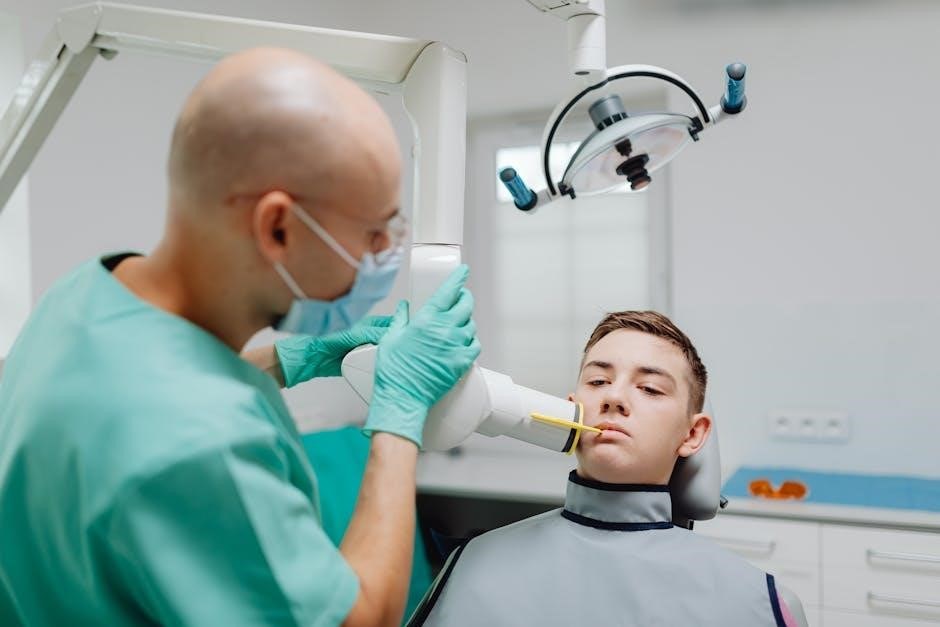
Career Advancement Opportunities
Patient Care Technicians can advance by specializing in gerontology or critical care. With experience‚ they may move into leadership roles like senior PCT or assistant nurse manager.
13.1 Specializing in Specific Patient Populations
Patient Care Technicians can specialize in caring for specific patient groups‚ such as gerontology‚ pediatrics‚ or critical care. This specialization enhances their expertise and marketability. Working with diverse populations‚ PCTs gain deeper understanding of unique needs‚ improving care quality. Specialization also opens doors to higher-demand roles and advanced certifications‚ allowing PCTs to grow professionally and contribute meaningfully to patient outcomes in their chosen field.
13.2 Advancing to Leadership Roles
Patient Care Technicians with experience and strong leadership skills can transition into supervisory or management roles. Advancement opportunities include becoming a Lead PCT‚ overseeing teams‚ or specializing in training new staff. Leadership roles involve coordinating care‚ mentoring junior technicians‚ and ensuring high-quality patient outcomes. These positions require enhanced communication‚ organizational‚ and problem-solving abilities. Advancing to leadership roles not only enhances career growth but also contributes to improved patient care and operational efficiency in healthcare settings.
Patient Care Technicians play a vital role in healthcare‚ bridging the gap between patients and medical teams. Their responsibilities require a blend of clinical skills‚ compassion‚ and effective communication. As the healthcare industry evolves‚ PCTs must adapt to new technologies and ethical challenges. With proper certification and continuous learning‚ PCTs can advance their careers and contribute meaningfully to patient care. This guide provides a comprehensive overview‚ equipping aspiring PCTs with the knowledge needed to excel in their roles and make a lasting impact in healthcare settings.


